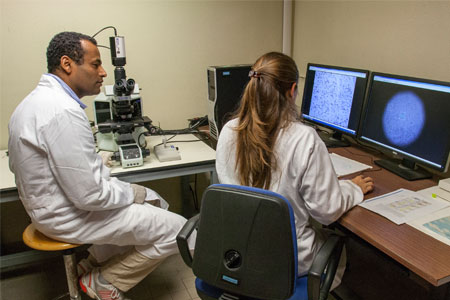- Authors:
-
Göpel, Siri; Guther, Julia; Gladstone, Beryl Primrose; Conzelmann, Nadine; Bunk, Stefanie; Terzer, Tobias; Verschuuren, Tess D; Martak, Daniel; Salamanca, Elena; Autenrieth, Ingo B; Peter, Silke; Kluytmans, Jan A J W; Hocquet, Didier; Rodriguez-Baño, Jesus; Tacconelli, Evelina
- Title:
-
Drivers of extended spectrum β-lactamase (ESBL)-producing Enterobacterales colonization among residents of long-term health care facilities: a European multicentric prospective cohort study
- Year:
-
2025
- Type of item:
-
Articolo in Rivista
- Tipologia ANVUR:
- Articolo su rivista
- Language:
-
Inglese
- Referee:
-
No
- Name of journal:
- Journal of Hospital Infection
- ISSN of journal:
- 0195-6701
- N° Volume:
-
157
- Page numbers:
-
67-74
- Keyword:
-
ESBL producing Enterobacterales; acquisition; colonization; long-term care facility; molecular epidemiology
- Short description of contents:
- Background: ESBL-producing Enterobacterales (ESBL-PE) are highly prevalent in long-term healthcare (LTCF) settings. In order to estimate the acquisition rate of ESBL-producing Escherichia coli and Klebsiella pneumoniae in LTCF settings and identify clinical and environmental risk factors, a multicentric, prospective cohort study was conducted in six LTCFs in Germany, France, Spain and the Netherlands. Methods: Longitudinal screening of residents was performed over 32 weeks, collecting epidemiological and clinical data and environmental samples. The primary outcome was rate of new acquisition of ESBL-PE among LTCF residents. Molecular epidemiology was studied using whole genome sequencing and risk factor analyses using logistic and Poisson regression models. Results: 299 residents provided 1958 samples during follow-up. Prevalence of ESBL-PE colonization at baseline was 16.4%, incidence rate of acquisition was 0.79 per 1000 resident-days, both with high variability among centres. Age ≥80 years, vascular disease, and antibiotic consumption within one year were risk factors for baseline colonization. Lack of hand sanitizers and low nurse to resident ratio were associated with colonization. Presence of medical devices was associated with risk of acquisition. Vascular disease, hemiplegia, antibiotic consumption, and non-availability of private bathrooms were associated with multiple ST carriage. Prevalence of ESBL-PE among environmental samples was 2%, exclusively in centres with high prevalence among residents. Genetic analysis showed a high prevalence of ST10 E. coli and ST405 K. pneumoniae at two study sites. Conclusion: Infection prevention including availability of hand sanitizers, the number of nurses per resident, and antimicrobial stewardship interventions constitute important measures to control ESBL-PE in LTCFs. Genome-based surveillance could guide targeted interventions.
- Note:
- Available online 7 January 2025
- Product ID:
-
143799
- Handle IRIS:
-
11562/1149692
- Last Modified:
-
May 24, 2025
- Bibliographic citation:
-
Göpel, Siri; Guther, Julia; Gladstone, Beryl Primrose; Conzelmann, Nadine; Bunk, Stefanie; Terzer, Tobias; Verschuuren, Tess D; Martak, Daniel; Salamanca, Elena; Autenrieth, Ingo B; Peter, Silke; Kluytmans, Jan A J W; Hocquet, Didier; Rodriguez-Baño, Jesus; Tacconelli, Evelina,
Drivers of extended spectrum β-lactamase (ESBL)-producing Enterobacterales colonization among residents of long-term health care facilities: a European multicentric prospective cohort study
«Journal of Hospital Infection»
, vol.
157
,
2025
,
pp. 67-74
Consulta la scheda completa presente nel
repository istituzionale della Ricerca di Ateneo 








